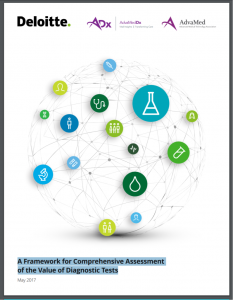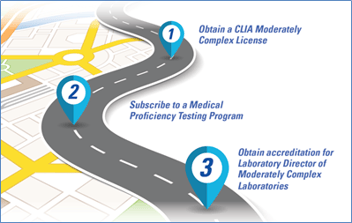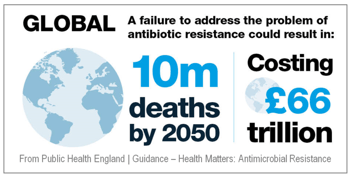Diagnostics: The Value of Accurate, Timely Medical Care
While the cost-driven healthcare industry tends to undervalue diagnostics, the role it plays in today’s healthcare environment is enormous – and it only continues to grow.
 Without lab results, healthcare practitioners would simply be using guesswork. Bottom line: results matter – and lab tests have an out-sized influence on medical decisions compared to their share of healthcare spending.
Without lab results, healthcare practitioners would simply be using guesswork. Bottom line: results matter – and lab tests have an out-sized influence on medical decisions compared to their share of healthcare spending.
A peer-reviewed paper (The Value of In Vitro Diagnostic Testing in Medical Practice: A Status Report) which analyzed doctor perceptions on the cost of IVDs, succinctly captured the importance of diagnostics: “Appropriate testing allows early-stage interventions, reducing late-stage healthcare expenditure (HCE).”
Patient-facing clinicians have long known this, and value the ease of use, patient-friendly and time-saving nature of diagnostics in making their practices more efficient and responsive to the patient’s care.
Earlier this year, AdvaMedDx published a thought-provoking report - A Framework for Comprehensive Assessment of the Value of Diagnostic Tests - which aimed to quantify the value of diagnostic testing in our new value-driven model of healthcare.
 “AdvaMedDx launched a Strategic Value Initiative, in collaboration with Deloitte Consulting LLP, to develop principles and an approach for assessing the value of diagnostics that can be adopted by diagnostic manufacturers, health systems, payers, and other stakeholders.”
“AdvaMedDx launched a Strategic Value Initiative, in collaboration with Deloitte Consulting LLP, to develop principles and an approach for assessing the value of diagnostics that can be adopted by diagnostic manufacturers, health systems, payers, and other stakeholders.”
The report details how establishing a value for a diagnostic product means not only understanding the underlying value proposition of the product itself, but also the ability to clearly demonstrate and articulate how that value both translates to patient outcomes and creates stakeholder value.
Value Drivers: Measuring the Value
The report defines a set of four value drivers. These are the four broad ways in which a diagnostic might impact the patient care process.
- Clinical impact
The extent of clinical utility and the health outcomes associated with the diagnostic/imaging technology. (e.g., does it improve the patient’s health or speed up the treatment time?) - Non-clinical patient impact
The impact of non-clinical benefits for the patient. These would include the patient experience (e.g., is the diagnostic invasive? Is it painful or time-consuming?), and patient economics (what is the out-of-pocket cost?) - Care delivery revenue and cost impact
The impact on revenue and operating costs relative to the benefits. (e.g., how much does it cost, versus how much does it speed time to diagnosis and accordingly free up a hospital bed?) - Public/population impact
The broader impact an diagnostic may have on the wider healthcare system, employers or society (e.g., does it have a positive impact on public health?)
The Complexity of Stakeholder Value
The ways in which a diagnostic can affect and influence these value drivers differs according to the stakeholder. According to the report, there are numerous stakeholders in the healthcare continuum: patients, providers, clinical laboratories, employers, patient advocacy organizations, quality organizations, professional medical associations, payers and the government.
While – for all intents & purposes - all of these stakeholders have an interest in promoting positive clinical impacts, they each tend to prioritize their objectives (and the value drivers listed above) differently. As mentioned earlier, diagnostics offer tremendous advantages on the patient-facing side - benefitting both clinicians and the patient – and ultimately the payers.
The value of a manufacturers’ diagnostic product is directly related to their ability to effectively address each stakeholder’s unique set of value drivers.
In some cases, the focus will be on the economies of testing, whereas in other cases the emphasis will be on how the test can improve care delivery – whether for the patient, the provider, or another stakeholder. A different stakeholder – governments come to mind – will de-emphasize individual patient outcomes in favor of the broader public benefits, or the cost.
AdvaMed’s report does a good job highlighting the complexity & dynamism of determining a diagnostic product’s value. They provide a clear demonstration that the value – while clinically critical – can shift according to how all of the various parties measure success against their particular objectives. And with 70% of medical decision-making based on test results, properly valuing diagnostics will continue to be vitally important.
To learn more about AdvaMed’s analysis, you can read the full report here (available as a pdf): A Framework for Comprehensive Assessment of the Value of Diagnostic Tests.



Share Article